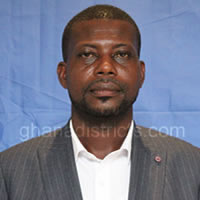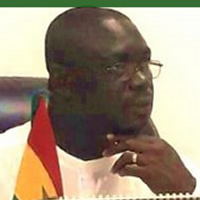Education
Number of Schools and Ownership
The Amansie Central District has 206 Primary Schools and Kindergartens (KG) .There are 42 Junior High Schools, two (2) Senior High Schools in the Public system and three (3) Private Junior High School. There is also one (1) Integrated Community Centre for employable Skills (ICCES), which is also a Public Institution.
i. Enrolment Levels
Enrolment figures in the district have dropped by 0.3% as compared to the previous year. This is due to the illegal mining activities in some of the communities. It is hoped that enrolment will improve when the Free Uniform and Exercise Books initiatives are fully implemented. This will help the district achieve near 100% Gross Enrolment Rate in the nearest future and help attain the SDGs in the district. Table 1.29 shows the enrolment levels in the Public Schools.
ii. Educational Infrastructure
The performance of students is greatly affected by the level of educational facilities available in the schools. Availability of good educational facilities helps in effective teaching and learning.
There were about 655 classrooms in all levels of education in the district. Out of these, 469, representing 71.6% were in good condition. However, 186, representing 28.4% classrooms were in deplorable condition and needed major repairs. The Amansie Central District Assembly had done and was still doing a great job by constructing good buildings for most schools but there was still a lot to be done.
The furniture situation in most schools is poor. The District Assembly has supplied quite a good number of dual and mono desks to schools over the years but the directorate requires a total number of 2041 mono desks at the JHS level and 2920 dual desks at both KG and Primary levels. This major furniture problem is faced at the Pre-school level.
iii. Number of Teachers and their Qualification
Teacher population in the District is made up of trained teachers, untrained teachers and some volunteers. The trained teachers dominate but some of them refuse posting to the communities that lack almost all the social amenities making teachers retention in the district very poor. Most trained teachers want to leave the district giving all sorts of excuses.
iv. Pupil Teacher Ratio
The pupil teacher ratio is low at the pre-school (32:1) and primary (28:1) levels and at the Junior High Schools level (13:1) mostly due to the subject teaching approach being used.
v. Pupils’ Performance
One thousand and Seventy-nine (1,079) candidates registered for the BECE in 2017 which is made up of 574 boys and 505 girls. Sixteen (16) were absent due to various reasons prominent among which were one (1) death, four (4) travelled, one (1) illness and two (2) drop-out and five (5) girls pregnant/married. In 2016, the overall performance stood at 82% but increased to 82.2% in 2017.
vi. Supervision of Schools
The District is divided into eight (8) Circuits manned by eight (8) Supervisors who go round the schools to ensure effective teaching and learning. A major problem being faced is the lack of means of transport to ensure regular and frequent visits to the schools. The Directorate has only one (1) pick-up and two (2) motorbikes which are not in very good condition. Lack of funds to pay for fuel for the Circuit Supervisors is another challenge. Most heads of the schools are not living up to their supervisory roles.
Implications for Development
The increase in overall enrolment in the basic schools particularly at the pre-school level means the district is gradually moving towards the targeted 100% Gross Enrolment stage.
There is the need to replace good classrooms with dilapidated structures and extend existing ones to meet the increase enrolment. Furniture, particularly for the pre-school, must be provided for the children to be comfortably seated to promote teaching and learning.
The average class size of 58as against the normal size of 35 per class makes teaching and learning difficult resulting in poor quality education. Only one secondary school at Jacobu caters for 38 Junior High Schools in the district which contributes partly to high dropout rate of pupils from JHS.
The percentage of trained teachers currently stands at 67% , 82% and 97% for Pre-school, Primary and Junior High School respectively. Even though efforts had been made, there is still the need to lure more trained teachers to the District. Ways must be found to retain more trained teachers in the district and motivate trained teachers to accept postings to deprived communities. Parents and pupils must be sensitized more on the importance of education, backed with some bye laws to make them give education the needed and serious attention it deserves.
The directorate also needs the necessary funding and means of transport to step up its supervisory role.
vii. Information Communication Technology (ICT) Education
With the introduction of ICT in the curricula of basic schools as an examinable course, there is the need for the District Assembly to provide ICT centres to enhance teaching and learning of the subject. ICT centres are inadequate in the District; there is only one (1) internet café/centre in the district. However, the Assembly has plans to network its new office and introduce internet access in the district. Additionally, apart from Jacobu Senior High School, no school has an ICT centre in the district.
Date Created : 11/16/2017 4:11:27 AM





 facebook
facebook twitter
twitter Youtube
Youtube TOLL FREE 0800 430 430
TOLL FREE 0800 430 430 +233 593 831 280
+233 593 831 280 GPS: GE-231-4383
GPS: GE-231-4383 info@ghanadistricts.com
info@ghanadistricts.com Box GP1044, Accra, Ghana
Box GP1044, Accra, Ghana